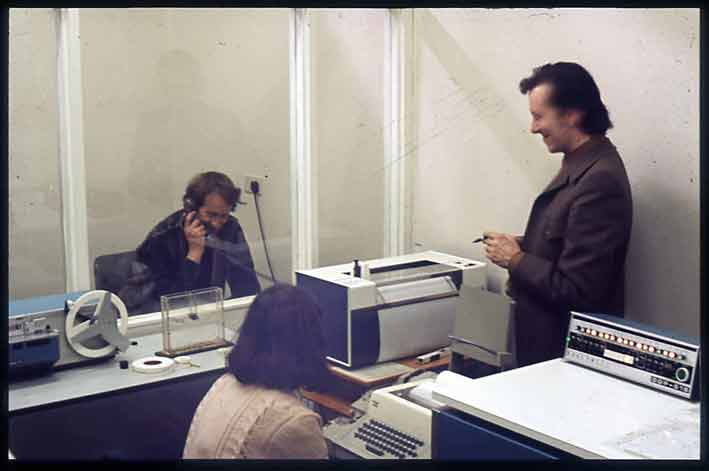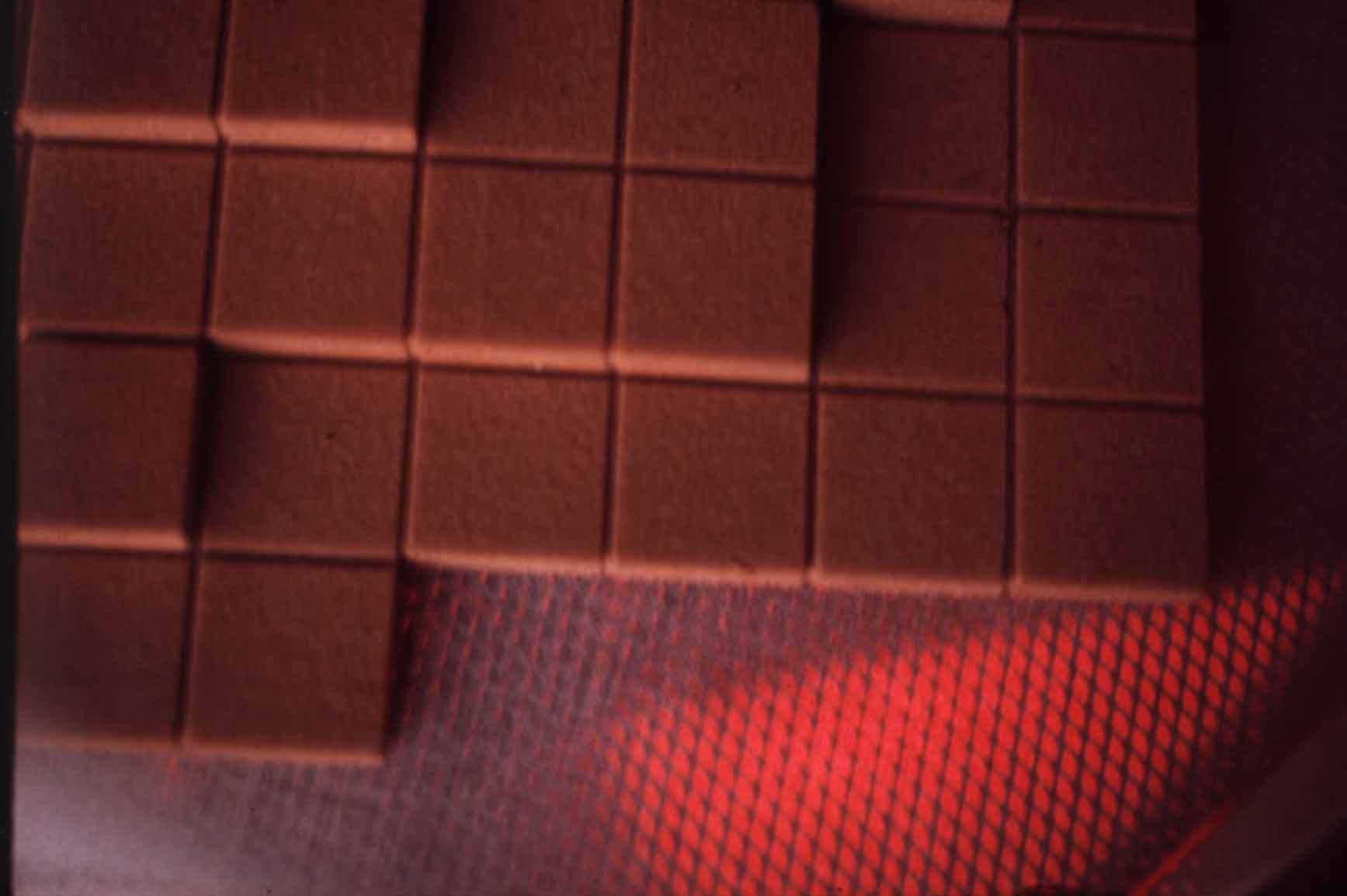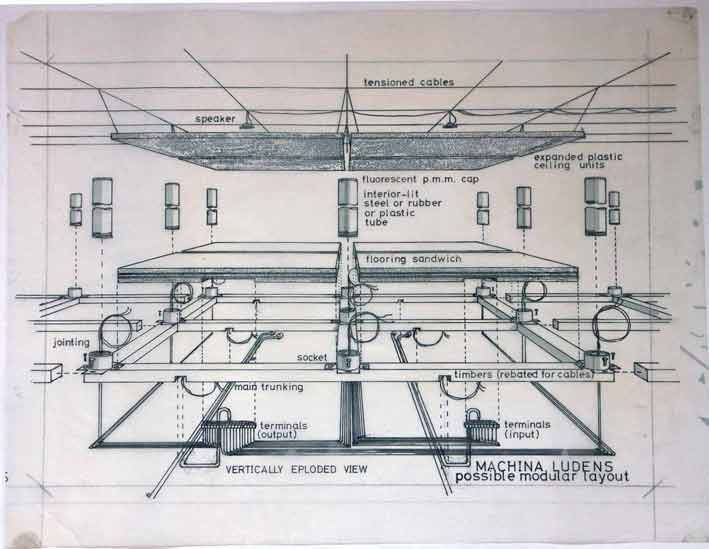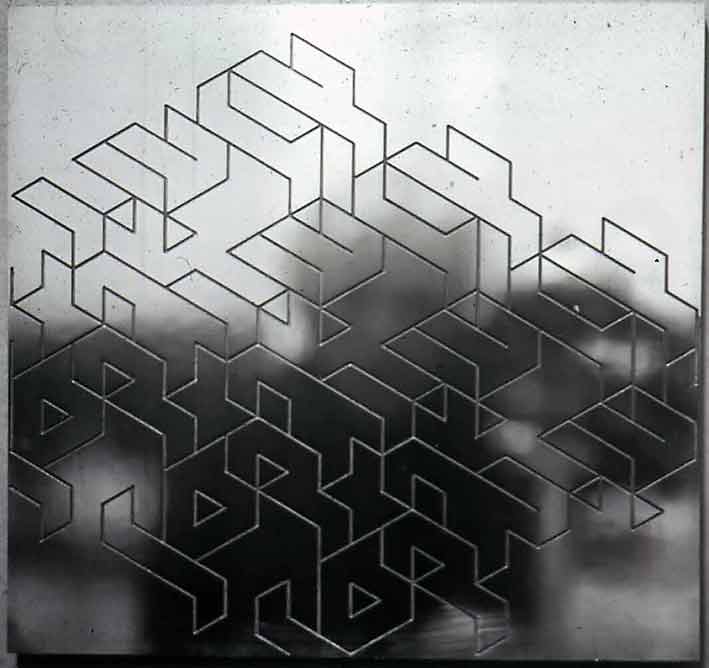Interactive
art
Higher education
Systems thinking
Sculpture
Curatorial
Publications
Contact
At the beginning of 1968 I developed Gemini, the first of a series of interactive works, and the next year led a team that took Interplay to the VI Paris Biennale. Development of interactive art systems was my focus for the next four years.
But, in early 1968, the idea of an artistic process that centred on a conversational interaction with an art work capable of responding to its environment, including people, presented itself as a radical alternative to the whole inward-looking world of Modern Art.
The projects described here were exhibited - in London, Paris, Swansea, Leicester, Nottingham and Edinburgh - between March 1968 and 1972. I worked on them with teams of engineers, designers, an architect and artists.
Gemini (1968)

A project mounted in collaboration with engineer Nick Nealson in the form of scale models of two structures, accompanied by incorporating a pattern of sensors and outputs (light and movement) - integrated by a logic circuit.
Datapack (1969)

Computer-managed interactive art system realized using both Honywell and GEIS equipment (with Ernest Edmonds).
Interplay (1969)

A project for an environmental and computer-managed scheme for adult creative participation. Structural model, electronic simulator, printed storyboards. Stroud Cornock, Bradley Faine, Nick Nealson, David Wood, Michael Brackenbury.
Machina Ludens (1971)

A second project for an environmental and computer-managed scheme for adult creative participation. Structural model, simulator, printed storyboards.
Labyrinth (1971)

This project is represented by a large number of images because it was both sensational and successful. Commissioned for the Nottingham Festival and managed by the Midland Arts Group, this was a runaway public attraction, involving immersion in a mirrored maze on two floors. Visitors that explored the space using ‘suss packs’ encountered roving spheres and the husk of an artist.
Rover (1971-72)

Research project conceived jointly with Ernest Edmonds as an electromechanical test bed for studying the psychology of art and interaction.